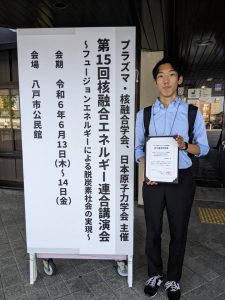Observation of New Energy Phenomena Induced by Light Irradiation on Nested Materials Associate Prof. Haneda et al.
In this study, carbon nanotubes (CNTs) were wrapped in boron nitride nanotubes (BNNTs) to synthesize nested cylindrical structures, and the electron and atomic motions induced by light irradiation were observed.
The electron motion was observed using broadband ultrafast transient transmittance measurements that can capture the instantaneous changes in molecular and electronic structures caused by light irradiation with an accuracy of one-trillionth of a trillionth of a second. Atomic motions were also observed using ultrafast time-resolved electron diffraction, which is capable of observing with an accuracy of one trillionth of a trillionth of a second.
As a result, we discovered that when different types of low-dimensional materials are superimposed on each other, a channel of electrons appears. Furthermore, it was found that electrons generated by light irradiation on CNTs are transferred into BNNTs through these channels. The energy of these excited electrons is quickly converted to thermal energy in the BNNTs, enabling extremely fast transport of thermal energy.
This study reveals a new physical phenomenon that occurs at the interface between two different materials. In addition to the ultrafast transport of thermal energy, this phenomenon has the potential to be applied to various new technologies, such as the development of ultrafast optical devices and ultrafast manipulation of electrons and holes generated by light irradiation.


